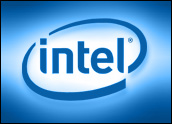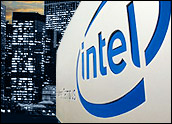
Chip giant Intel has slashed the price of some of its microprocessors in what company spokesperson George Alfs has called “a regularly scheduled price move.”
Among Intel’s myriad chips, the Celeron 570 saw the steepest cut, going from US$134 to $70, a 48 percent decrease.
Other notable price cuts for Intel chips include the Xeon X3370, down 40 percent from $530 to $316; the Core 2 Quad Q9650, down 40 percent from $530 to $316; and the Celeron Mobile 585, down 35 percent from $107 to $70.
Intel’s stock was down 5.82 percent to $12.92 per share in late-day trading on Tuesday.
Intel wasn’t the only semiconductor company with a depressed stock, however.
Advanced Micro Devices was down nearly 10.5 percent to $2.05 per share while ON Semiconductor was down 4 percent to $4.22 per share and Fairchild Semiconductor was down 11 percent to $4.42 per share.
Chip Price Cuts Business as Usual
While Wall Street seems to have interpreted the announcement from Intel as bad news — sending the stock spiraling down nearly 6 percent — it appears the price cuts are business as usual for the nation’s No. 1 semiconductor company.
“This kind of price-cutting action is something Intel does on a regular basis,” Nathan Brookwood, a fellow at Insight 64, told the E-Commerce Times. “They’ve been doing it since the early ’90s. Sometimes the percentages are a little bit more or a little less.”
Wall Street’s reaction is both predictable and misguided, Brookwood said. “Every once in a while some guy on Wall Street puts out a story and says that AMD is catching up or Intel’s cutting prices because the economy’s in the crapper, but it rarely has anything to do with external forces.”
Price cuts are determined by a variety of factors including supply and demand and which segments Intel may be targeting at a specific time, noted Intel’s Alfs.
“We have price changes quite regularly throughout the year,” he said. “Over the last few years, we’ve averaged at least one price change per month.”
Moving Inventory
When Intel cuts the prices of certain chips, PC makers don’t automatically lower the prices of their products. Instead, they tend to make laptops, desktops and servers that use Intel processors that went for the same price as the old chips prior to repricing, Brookwood explained.
“In essence, customers tend to get higher performance products for the same amount of dollars as before,” he said. “This is Intel’s way of keeping the market moving. AMD has to do that as well, just to remain competitive with Intel.”
In some instances, consumers will opt for machines powered by older chipsets, but those that do so should be sure they won’t need more computing power for a few years, he said.
AMD Getting Stronger
In 2007, AMD struggled to get its fastest and newest chips into the market. Some of the AMD chips that did make it into the market were too big, too expensive and had too many bugs, Brookwood said.
That’s not the case any longer, though.
“Now, in some cases, AMD is very competitive with the performance of Intel’s chips,” Brookwood said. “However, they’re not necessarily competitive with some of Intel’s next-generation high-end chips that were launched in December — those are faster than anything AMD has.”






















































Social Media
See all Social Media